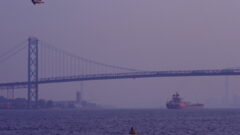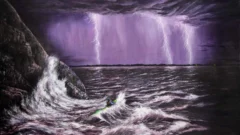Tag: Detroit River
Great Lakes states and provinces to host seventh annual Aquatic Invasive Species Landing Blitz
Ann Arbor, Michigan – Organizations across the region will come together to educate the public about aquatic invasive species (AIS) during the seventh annual Great
Great Lakes Moment: Creating a U.S. Great Lakes Waterfront Trail
Great Lakes Moment is a monthly column written by Great Lakes Now Contributor John Hartig. Publishing the author’s views and assertions does not represent endorsement by Great Lakes Now or Detroit PBS.
The Eastern Seaboard has the East Coast Greenway and the Appalachian Trail.
Wildfire smoke from Canadian blazes threatens Detroit air quality
By Dustin Blitchok, Planet Detroit
This article was republished with permission from Planet Detroit. Sign up for Planet Detroit’s weekly newsletter here.
Michigan faces an air quality advisory Friday and into Saturday morning due to smoke from Canadian wildfires.
The state could experience elevated levels of fine particulate matter, and conditions may be unhealthy for sensitive groups, the Michigan Department of Environment, Great Lakes, and Energy said in a statement.
Points North: The Longest Paddle
By Ellie Katz, Interlochen Public Radio
Points North is a biweekly podcast about the land, water and inhabitants of the Great Lakes.
This episode was shared here with permission from Interlochen Public Radio.
In the summer of 2015, Traci Lynn Martin’s mom was in the final weeks of a battle with cancer.
The Longest Paddle
After Traci Lynn Martin’s mom died, she knew she couldn’t keep putting off her dream: Becoming the first person to kayak around the Great Lakes in one year.








